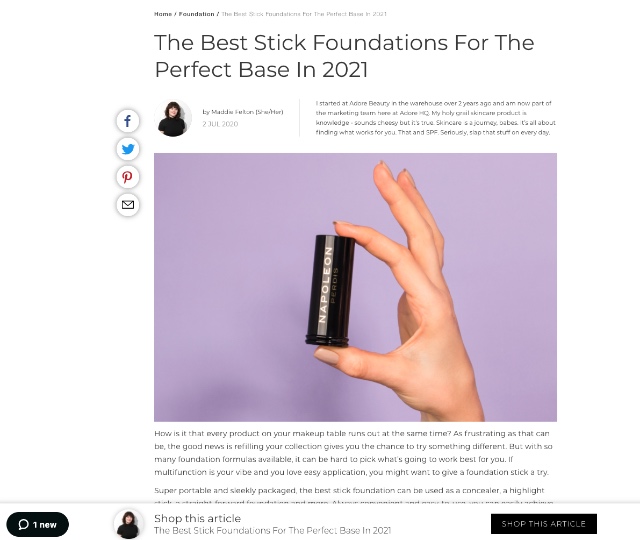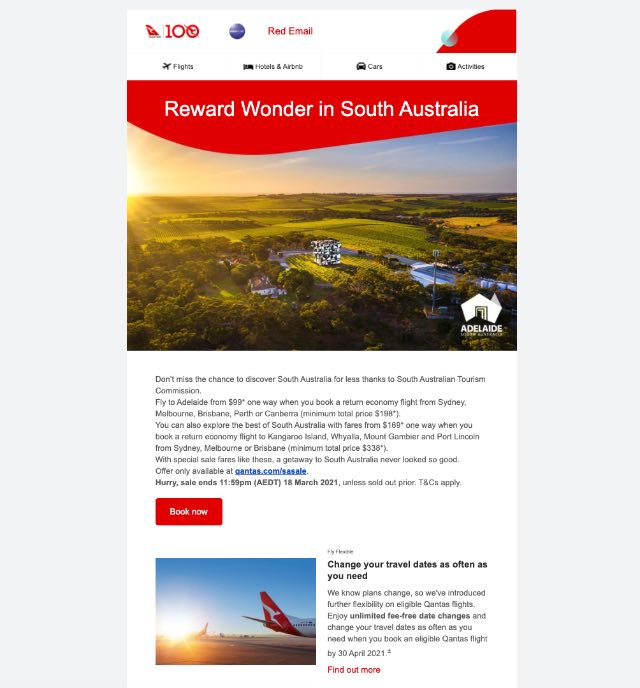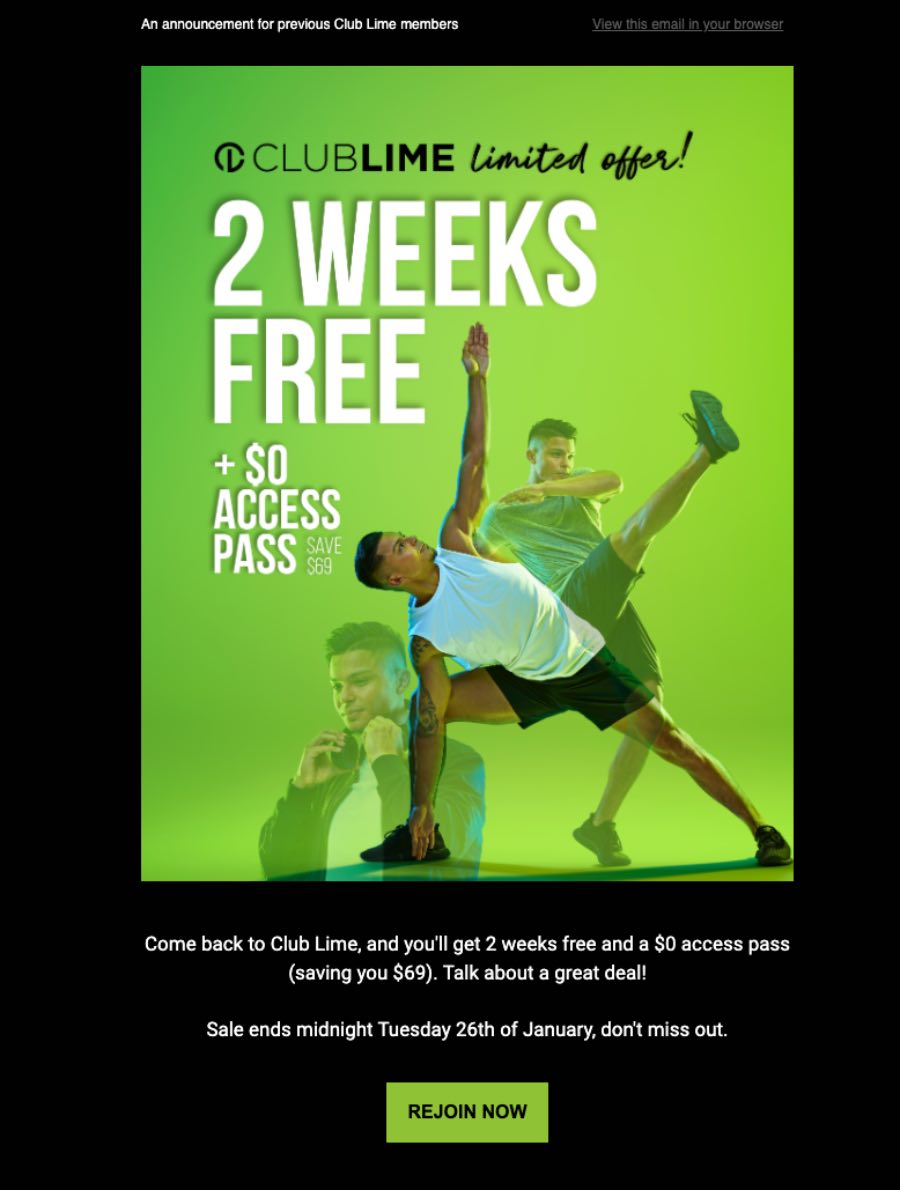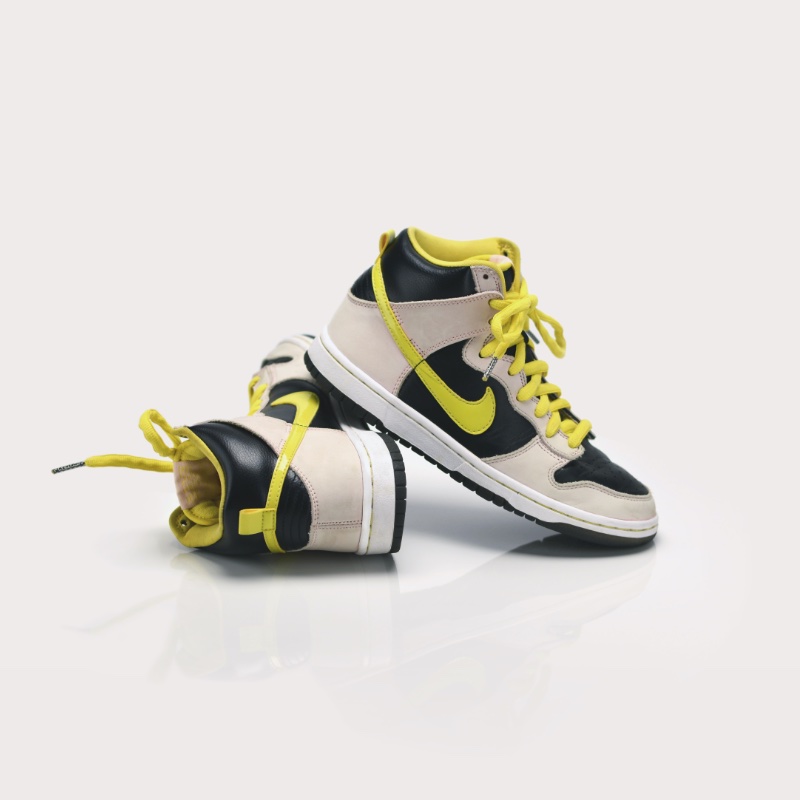A marketing funnel is one of those buzzwords that flies around a lot, particularly in digital marketing.
We all know what funnels are, right? Handy for getting liquids or powders into any kind of vessel that has a small opening.
But – don’t try that with your customers. They probably won’t like being physically squeezed through into any kind of bottle.
But, some kind of funnels can be really useful for a digital marketing strategy.
In my opinion, the marketing funnel is actually a pretty nifty analogy for visualising a customer’s path, all the way from the awareness stage right through to loyalty.
If you’re trying to sell any kind of product or service, whether online or traditionally, it’s time you started thinking about funnels.
But how can you make sure your marketing funnel is as powerful and streamlined as possible?
Well, let’s see if we can do our best to answer that for you.
Think you’d rather brush up on your Google Ads knowledge?
Well, we can do that too.
The best part of the digital marketing funnel is clearly the moment of a sale – but does it end there?
WHAT IS A MARKETING FUNNEL?
The first cab off the ranks is luckily the simplest place to begin. Exactly what is the digital marketing funnel?
I once had a French lecturer who bemoaned and despised what he called ‘the language of marketing’ – it’s essentially words that have been invented by and for the English language marketing community, and then hastily half-translated, or simply transposed into other tongues.
Well, sadly this article is not for him.
You may also hear different names for funnels – either the sales funnel, online marketing funnel or the digital marketing funnel. But, they’re all funnels, no matter what, and they all operate in pretty much the same way as a traditional sales funnel.
You see, funnels should form a core component of your marketing strategy. Start thinking about your customer like a real person who is on a journey from discovery to purchase. Your job, and the job of your digital marketing strategy, is to keep pushing them up the mountain through all of the stages and towards conversion.
Now, you may think that conversion simply means making purchases. However, brands try to get customers to take other actions – whether it’s signing up to receive emails, filling out forms or surveys, or downloading an ebook.
So, why are they called funnels?
Firstly, we all know funnels are wider at the top, right? Well there are going to be more people in this section. Unfortunately, as you move through, some buyer’s journeys will come to an end and they will drop out.
We do often wish that funnels could become cylinders that catch everyone, but sadly this is not the reality, and not every journey will end with the desired action being taken.
That’s not to say that your business’ digital marketing strategy should not be designed in order to turn funnels into cylinders.
The trick to a good marketing funnel is ensuring you cast the proverbial net as wide as possible at the top. The more customers you can catch up here, the more you will eventually have down the bottom.
Along the way, your content marketing, SEO, engagement across social and paid channels should be working hard to ensure customers slide directly through to the next stage. The better the marketing activities, the more likely it is that you can direct more customers all the way through the funnels.
Depending on what kind of products or services you’re offering, the consumer decision journey can take anywhere from a couple of minutes to a couple of months!
The best kind of marketing funnels are those which are created with a thorough knowledge of the potential customers.
We’ve written a bit on the blog about user intent being the next big thing in SEO – the same logic goes for all of the marketing activities.
The more knowledge your business has of its potential customer base, the tighter and more specific your funnels can be.
With online marketing funnels, like a real-life one, the end goal is to ensure your customers are ‘repeats’. They, like the rice grains you might be tipping into a container, are trapped (happily) in the box, and want to stay there.
Like the rice grains, your job, as the marketer, is to ensure they don’t keep falling out. After all, have you ever tried to pick lots of tiny bits of rice up off the floor?
It’s not fun.
Okay, so now that we’ve established what the online marketing funnel is – let’s move on to looking at what goes on in each of its 5 stages.
STAGE 1: AWARENESS
Funnels start off pretty wide, and so the awareness stage is where you will naturally capture a large target audience. Potential customers normally come into the marketing funnel through (you guessed it) marketing campaigns!
This is very much the beginning of the consumer decision journey because they might not even know they want to make a purchase yet.
Obviously, you’re going to want to do all of the usual things – social media posts and ads and paid media campaigns.
But, you’ve got to go further and really establish trust for the brand and products – mentions in the media, promotions by influencers on Instagram and Facebook, viral campaigns, events, content and direct mail. There are countless other ways to do this, of course, but it all needs to be tied into your content marketing strategy.
Remember, there is more to this stage than simply advertising alone. You really need to begin to establish trust for your brand – as we said, funnels have to be played as long-games.
From a business’ perspective, this is also the stage where you want to be conducting as much research as possible about your target audience and their pain points. It’s also where you should be beginning lead generation, as potential leads will be nurtured in later stages of the online marketing funnel.
LORNA JANE
Lorna Jane uses their Instagram as a platform to drive engagement and awareness. Screenshot.
A brand that is doing really well when it comes to this sort of awareness is none other than Australian activewear brand Lorna Jane. The company works extensively on their social media presence, particularly Instagram and Facebook. They do also post videos to their YouTube channel but this is less popular.
Looking at their Instagram in particular, it’s clear to see that with over 1 million followers, they’ve got something very right. Lorna Jane is less about ‘hard sell’ on their socials. Instead, they post relatable memes across both major channels, encouraging users to tag their friends and share their content with a broader circle.
The company’s blog, as well as their Instagram feed is also heavily content marketed. Lorna Jane shares recipes, workout tips and tricks as well as inspirational quotes alongside photos of their products being worn.
On the blog, the company shares extended recipes and workouts which play into their overarching philosophy that wellness and health are in fact holistic.
STAGE 2: INTEREST
This is the step where consumers have been exposed to your business, and they are now doing their research about what is out there on the market.
At this stage of the consumer decision journey, prospects are somewhat interested in buying products or services – they just don’t know who from yet.
It is definitely the time where you want to produce highly-targeted types of content, using all of that information you’ve previously gathered to target this to specific segments within the target audience.
Content about your industry, in particular, can go down really well here. If your business has conducted research has published comparative articles – share this with your audience. As well as trying to encourage people to buy, you’re really trying to get your target audience to trust you and all your content.
Funnels can get tricky at this stage because you really cannot scare people off too much. Too hard-sell with your content, and you’ve lost consumers’ interest.
Remember those grains of rice – once they’ve fallen out of the funnel, you’re probably not going to pick them back up.
ADORE BEAUTY
Adore Beauty is one brand killing it at the interest game with their helpful, comparative content.
Another Australian brand that really knows their stuff when it comes to pushing customers through the marketing funnel is Adore Beauty. An exclusively online cosmetics website, the company publishes articles which provide a nuanced and detailed comparison of a variety of brands’ offerings (all of which are stocked through their website, of course).
This sort of valuable content is very useful to customers that already know they want to buy something – but they just aren’t sure which brand, or colour would be best for them.
Providing potential customers with information that is not too hard-sell, as in the case of an article entitled “The Best Stick Foundations for the Perfect Base in 2021”. The author presents a variety of different options available on the market, and then proceeds to explain how to use a foundation stick. In doing so, customer concerns about the difficulty of applying such a product are alleviated, and they feel armed with more information to continue their journey.
The bottom of the page also offers a call to action, encouraging users to click directly to the shopping section of the website.
STAGE 3: CONSIDERATION
By now, you’re probably thinking, “finally – here is where we get people to buy!”
But alas, not yet, we are still very much at the middle of the funnel and the customer journey is not over yet.
As I said, people take a long time to make decisions.
By this stage, you really want prospects’ email addresses so you can send them specific product information about what your business can do for them that other brands cannot.
This is where you’re able to get a little more hard-sell.
B2B brands will share e-books, white papers and detailed downloadable content to try and set their services apart from what is available on the rest of the market.
Re-marketing across channels to target buyers who have visited your company website but maybe never completed the sale is always a good tactic for B2C brands. For potential customers, this often feels like an act of the Google god. You were just looking at a dress, and then when you’re on another website you see an ad for the exact same dress pop-up. Wow. These can also appear across the social network – especially Instagram and Facebook.
As far as funnels go – this is the slippery stage and time to bring out the big guns.
But, a person cannot consider forever (although, having worked in retail, it sometimes feels like it) – they eventually have to make a choice.
QANTAS
Qantas has long been acknowledged as a field-leader, and even in a pandemic they are delivering.
Obviously, there are not many people who would currently like to own or even work for an airline business. But Qantas continues to prove that its marketing strategies are genius.
Their emails during the pandemic have been a little different to usual. You can see in the example above that there are two key differences to pre and post-pandemic marketing. Firstly, there’s clearly a real focus on promoting domestic tourism, which Qantas have done by partnering with most state and territory tourism boards. Then, it’s key that customers need to have peace of mind when it comes to booking flights, so, the second element of this email campaign focuses strongly on ‘Fly Flexible’.
The last really well-done element of this campaign was its subject – ‘Hurry, our South Australian Sale ends soon’. Pressuring (nicely, of course) customers into making a decision is a great call to action and ensures you keep potential consumers sliding down through the marketing funnel.
STAGE 4: DECISION
It’s like watching a baby take its first steps – the buyers are so close to getting into the jar … but, still, not quite.
This is an agonising part of the online marketing funnel because it feels like you’ve waited forever and ever to get here.
All you need is one last unbeatable offer to convince potential customers that, after all, your brand or company is the number one.
Online, this can be through offering perks like free delivery, or a 20% off voucher (with an expiry-date). If you are a company selling clothing online, offering free returns can be a really good way of standing out from the crowd as it helps alleviate concerns over sizing.
Likewise, B2B brands might offer a time-sensitive ‘money-back guarantee’.
These offers often really help to push a buyer over that all important SPEND line to the purchase step.
Email re-marketing, a key digital marketing tactic can be effective if deployed when the customer journey ends at the checkout before the sale is completed. So, send them through an offer that’s too good to refuse.
Offer them a free product, or a voucher, or free delivery (that wasn’t previously available). It feels personalised, and, well – we all have FOMO (fear of missing out these) these days.
It’s also vital that the site’s UX (user experience) is seamless, secure and allows consumers to trust you as they part with money online. If the experience is terrible, it is unlikely they will come back for more.
Ah, the bliss of conversions.
And that’s the digital marketing funnel done, right?
Well, almost.
BONDI SANDS
Bondi Sands’ aggressive marketing techniques help to push customers to conversion.
This pop-up only appears on the page after the viewer has been idle for a couple of minutes.
In the two screenshots above, it’s clear to see that Australian self-tan brand Bondi Sands are going hard with their last-minute digital marketing.
They’re offering a 15% discount to students, 20% off if you sign up to their loyalty program, free samples if your order is over $70 and free delivery if it’s over $50 as well as a money-back guarantee and an ‘exclusive’ discount that pops up after you’ve been on the page for a couple of minutes.
Wow. I’m tired just thinking about all of that.
But this kind of aggressive last minute marketing can really work in your favour when you’re needing to push customers over the line and ultimately turn a click into a conversion. Be sure to make these deals seem exclusive to online and highly time-sensitive. This increases a customer’s sense of urgency.
STAGE 5: LOYALTY
Phew! You did it.
The sale has been secured, so why do you need to keep on working?
Well, this is the last, and vital stage of the online marketing funnel that often gets forgotten. After all, just because someone has made one purchase does not mean you want their journey with you to stop there.
What you really want is for customers to become repeats, and make purchases forever!
Maybe think of it this way – after you eventually get all of your rice in the jar (?) – it’s not that great if it all falls straight out the bottom. No, you want them trapped in there forever.
Cue evil laugh.
No, but seriously, for service-based businesses like insurance, this is called customer retention and it means you don’t want your customer to pick another provider.
For B2C brands, it’s more about customer loyalty, ensuring they come back to you time and time again.
This usually begins with an automated email to say thank you, requests for feedback or reviews and reminders about how to get in touch with you for support.
Loyal customers are also great because they often refer another person (or two) to the awareness stage of the funnel (and the journey simply begins all over again).
Continue building a relationship of trust – offer loyalty programs, email drip campaigns and give special offers for referrals or repeat purchases. Re-marketing is equally as important at the end of the funnel as it has been throughout. Continue sharing a variety of types of content with them to encourage them to buy again (and again, and again).
Now you’ve got it – a jar completely full of rice.
Just don’t ask me what to do when that jar gets full!
CLUB LIME
Club Lime’s email drip campaigns do their best to entice customers back to the service.
Subscription-based services may not realise but there is a big window of opportunity here to ensure customer loyalty. After all, just because someone is happy with the service does not mean they will pay for it indefinitely.
An example might be gyms, for example, Club Lime. These guys are very good at enticing previous customers to re-subscribe to their services after they have previously chosen to leave.
They do this with a variety of email drip campaigns that mention they have waived the access pass fee (which you normally have to pay for if you sign up again) or by offering a few weeks free, amongst others.
This plays on the notion that many customers probably did leave the gym with the intention of re-joining, but finding another financial hurdle in your path is simply another disincentive.
Club Lime also gathers information about why people cancelled their membership, and can use this to tailor ads to entice them back.
A QUICK RE-CAP: THE DIGITAL MARKETING FUNNEL
- Awareness: This is where you want to engage your target audience for the first time through the usual brand awareness activities – social and paid media campaigns, events, media-mentions and more. Begin building trust by sending information out that is not obviously ‘selling’ your products.
- Interest: At this stage of the online marketing funnel, potential customers are just that – potential. They begin to show an interest in buying a product or service. This is where you want to begin showing them you are an authority in your industry by publishing or sharing informative types of content such as comparisons or lengthy articles.
- Consideration: People know they need a product or service, but they are not sure which brand to go with. Go hard-sell here – re-marketing or highly detailed publications and industry research work well.
- Decision: Oh, your customers are so close here. All that is needed is to push them over the line with a final ‘too good to miss offer’.
- Loyalty: Now the sale has been completed, you need to convince them to stick around for a long time. Ensure that the checkout process went smoothly, send thank you emails or offers to join a loyalty program. Special discounts for referrals can also go down well.









